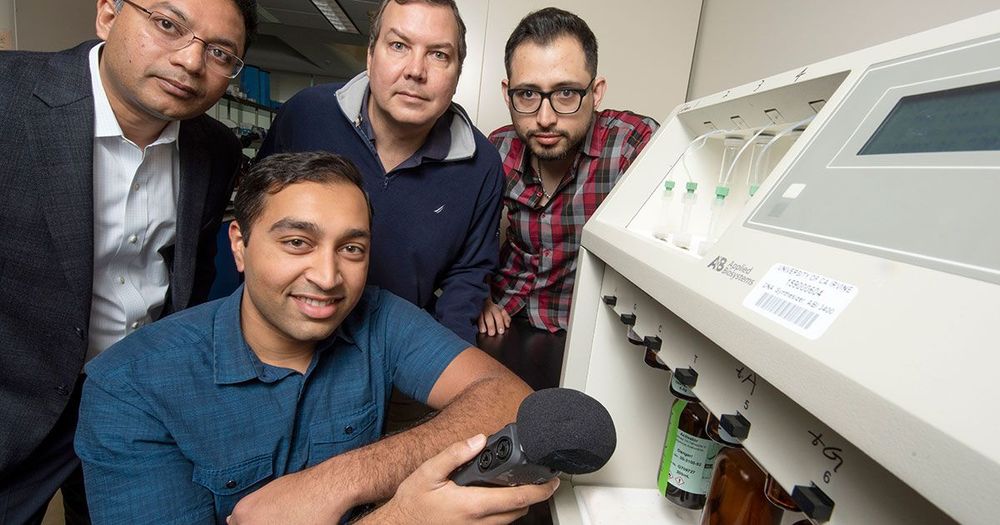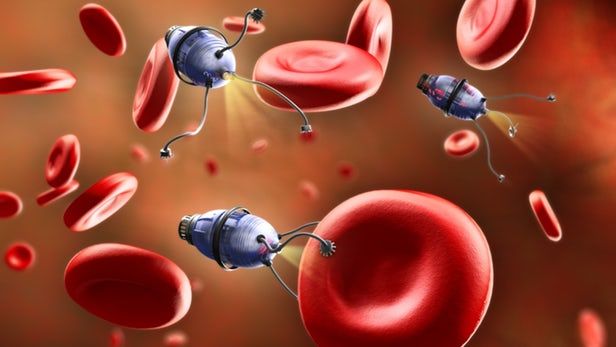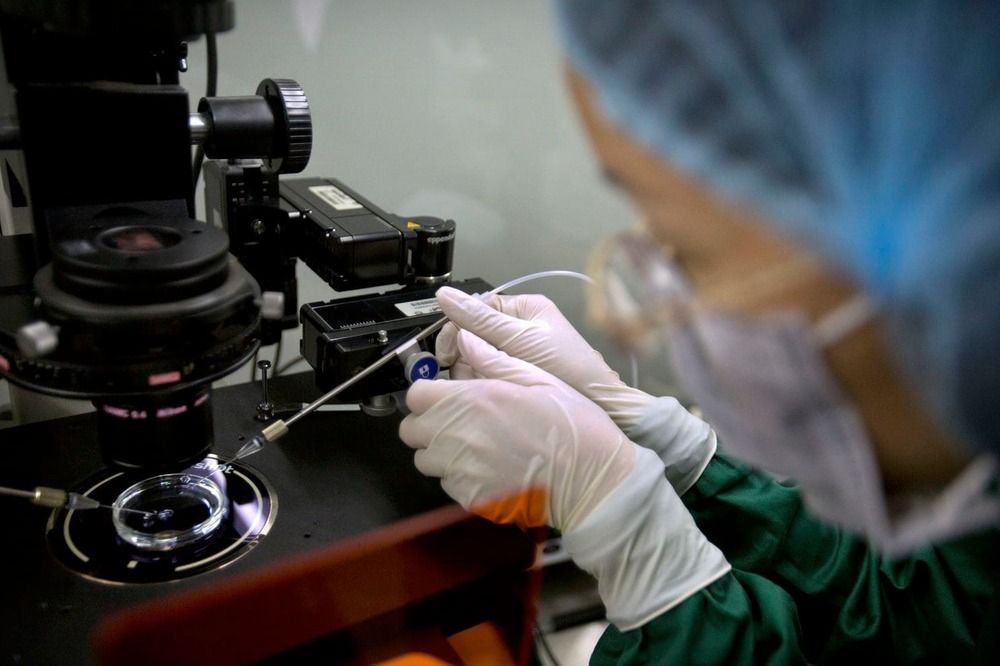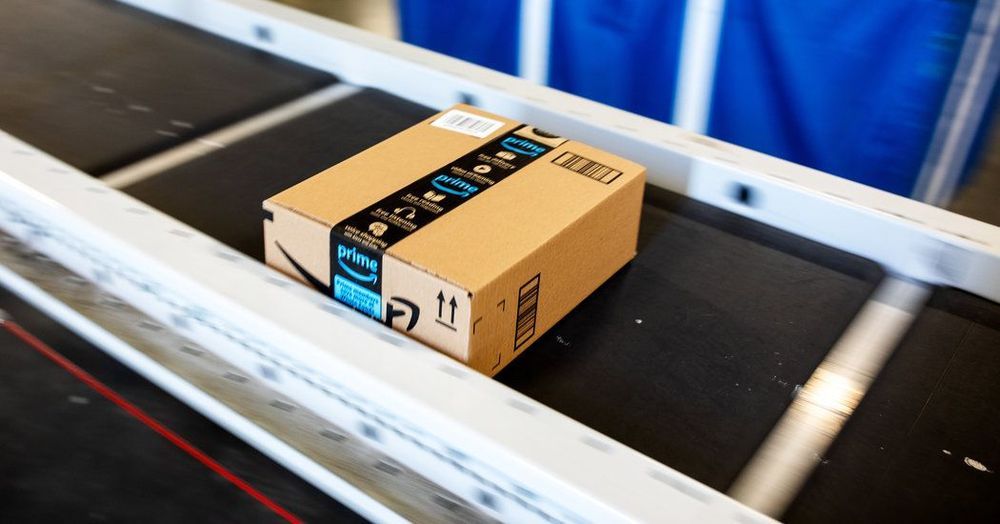We’re used to the security risks posed by someone hacking into our computers, tablets, and smartphones, but what about pacemakers and other implanted medical devices? To help prevent possible murder-by-hacker, engineers at Purdue University have come up with a watch-like device that turns the human body into its own network as a way to keep personal technology private.
Category: biotech/medical – Page 2,700

Fungi cause brain infection and memory impairment in mice
We are learning more about fungal infection and neurological diseases. Recently we learned of gingival diseases and Alzheimer’s. My wonder is how plants such as Moringa in one’s diet, that have antifungal properties, can help.
Fungal infections are emerging as a major medical challenge, and a team led by researchers at Baylor College of Medicine has developed a mouse model to study the short-term consequences of fungal infection in the brain.
The researchers report in the journal Nature Communications the unexpected finding that the common yeast Candida albicans, a type of fungus, can cross the blood-brain barrier and trigger an inflammatory response that results in the formation of granuloma-type structures and temporary mild memory impairments in mice. Interestingly, the granulomas share features with plaques found in Alzheimer’s disease, supporting future studies on the long-term neurological consequences of sustained C. albicans infection.
“An increasing number of clinical observations by us and other groups indicates that fungi are becoming a more common cause of upper airway allergic diseases such as asthma, as well as other conditions such as sepsis, a potentially life-threatening disease caused by the body’s response to an infection,” said corresponding author Dr. David B. Corry, professor of medicine-immunology, allergy and rheumatology and Fulbright Endowed Chair in Pathology at Baylor College of Medicine.

How to Steal DNA With Sound
The latest Facebook hack should have shown everyone nothing is safe. Researchers have now shown how easy it is to steal data from people doing research.
Engineers at the University of California say they have demonstrated how easy it would be to snoop on biotech companies making synthetic DNAll you need is an audio recording, they say. Place a smartphone near a DNA synthesizer, record the sound, run the recording across algorithms trained to discern the clicks and buzzes that particular machine makes, and you’ll know exactly what combination of DNA building blocks it is generating.
Researchers devise method for snooping on DNA synthesis using acoustic recordings. But is it a real threat?

Magnetic nano-probe explores individual cells from the inside
There’s a good chance that in the future, microscopic robots could be swimming and crawling their way through our bodies to deliver drugs or fight infections. While some of these have been capable of manipulating individual cells, researchers at the University of Toronto have developed a new way to get nano-scale probes inside cells, and precisely control them once they’re in there.

Skin Repair Eliminates ‘Inflamm-Aging’ Linked to Chronic Disease
Thirty-three older adults between the ages of 58 and 95 applied the cream all over their bodies twice a day for 30 days. After a month, the researchers measured blood levels of three cytokines—interleukin-1 beta, interleukin-6, and tumor necrosis factor (TNF) alpha—that have all been implicated in age-related inflammatory diseases. Using the cream reduced the amount of all three cytokines compared to both the participants’ levels before using the cream and the levels of similarly aged adults who did not use the cream. In fact, using the cream lowered participants’ cytokine levels to be nearly equivalent with people in their 30s, suggesting that rejuvenating the skin can reverse “inflamm-aging.” The cream also improved skin hydration, lowered pH, and repaired the permeability barrier.
Skin is the body’s largest organ, and scientists at UC San Francisco and the San Francisco Veterans Administration (VA) Health Care System think it may be to blame for body-wide inflammation linked to numerous chronic diseases of aging. The good news is that properly caring for the skin with a moisturizing cream may lower inflammation levels and potentially prevent age-related diseases, according to a new clinical pilot study.

As humans get older, we experience a low-level of inflammation—dubbed “inflamm-aging”—driven by an increase in molecules in the blood called cytokines. This age-related inflammation has been linked to serious chronic diseases, including Alzheimer’s disease, cardiovascular disease, and diabetes. Scientists initially thought that the inflammation stemmed from the immune system or the liver, but a group of dermatologists at UCSF have a different theory.
“The inflammation must come from an organ big enough that very minor inflammation can affect the whole body. Skin is a good candidate for this because of its size,” said study senior author Mao-Qiang Man, MD, a research scientist in the UCSF Department of Dermatology, who is based at the San Francisco VA Health Care System and is also a visiting professor at Southern Medical University in Guangzhou, China. “Once we get old, we have dermatological symptoms like itchiness, dryness, and changes in acidity. It could be that the skin has very minor inflammation, and because it’s such a large organ it elevates circulating cytokine levels.”


Amazon Pulls 2 Books That Promote Unscientific Autism ‘Cures’
Good for Amazon.
Amazon has removed the online listings for two books that claim to contain cures for autism, a move that follows recent efforts by several social media sites to limit the availability of anti-vaccination and other pseudoscientific material.
The books, “Healing the Symptoms Known as Autism” and “Fight Autism and Win,” which had previously been listed for sale in Amazon’s marketplace, were not available on Wednesday. The company confirmed that the listings had been removed, but declined to discuss why or whether similar books would be taken down in the future.
Several such books were still listed on Wednesday. In an article published this week, Wired magazine noted that Amazon is crowded with titles promoting unproven treatments for autism that include “sex, yoga, camel milk, electroconvulsive therapy and veganism.”
Serotonin can regulate gene expression inside neurons
“Our findings represent a dramatic divergence from the current dogma, which works primarily on the premise that neurotransmitters like serotonin and dopamine act solely through the activation of their membrane receptors in the brain to regulate brain cell activity,” says Ian Maze, PhD, Assistant Professor of Neuroscience, and Pharmacological Sciences, at the Icahn School of Medicine at Mount Sinai, and senior author of the paper. “We found actions of these brain chemicals that are independent of neurotransmission but critically important to their overall signaling, suggesting that our current understanding of these molecules is incomplete and requires further investigation.”
Findings could fundamentally change how scientists interpret the biological activities of serotonin.
Scientists Design a Network That Lives Inside Your Body
To keep pacemakers and insulin pumps secure.

Google+ Communities Won’t Go Down Without a Fight
In April of 2019 Google+ is going away. However, if you have stuff that you really want to save someone created a workaround. You can now move your content to Discourse.
Google+ is dead. Granted people have been saying that much for years now, but this time it’s really true. As of April, Google’s social media experiment will officially go the way of Reader, Buzz, Wave, Notebook, and all the other products that the search giant decided they were no longer interested in maintaining. Unfortunately in the case of Google+, the shutdown means losing a lot of valuable content that was buried in the “Communities” section of the service. Or at least that’s what we all thought.
Thanks to the efforts of [Michael Johnson], many of those Google+ communities now have a second chance at life. After taking a deep dive into the data from his own personal Google+ account, he realized it should be possible to write some code that would allow pulling the content out of Google’s service and transplanting it into a Discourse instance. With some more work, he was even able to figure out how to preserve the ownership of the comments and posts. This is no simple web archive; you can actually log into Discourse with your Google account and have all of your old content attributed to you.
To date, [Michael] has managed to transplant over 40,000 posts and around into “The Maker Forums”. With a few more weeks until the lights officially go out over at Google+, he says there’s still time to scrape more data out of the service if anyone has suggestions on maker-related content that they think is worthy of preservation. Of course, as all the code for the project as been released as open source, there’s still hope for the non-technical Communities should anyone want to spearhead the effort to duplicate those as well.